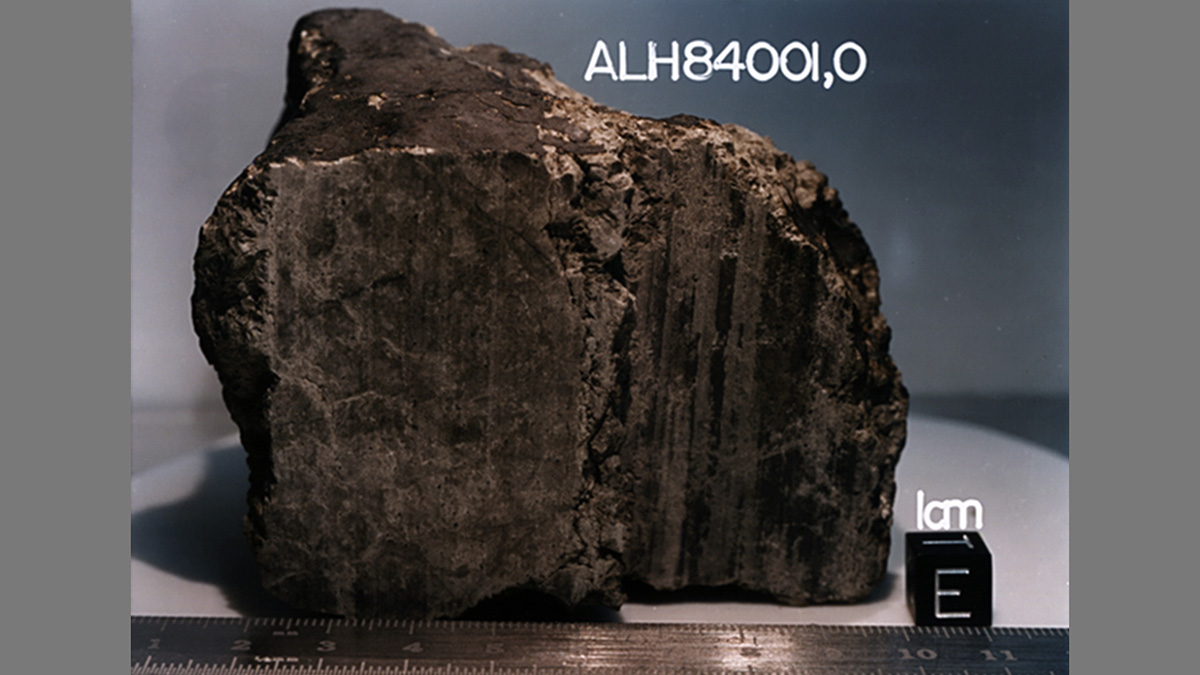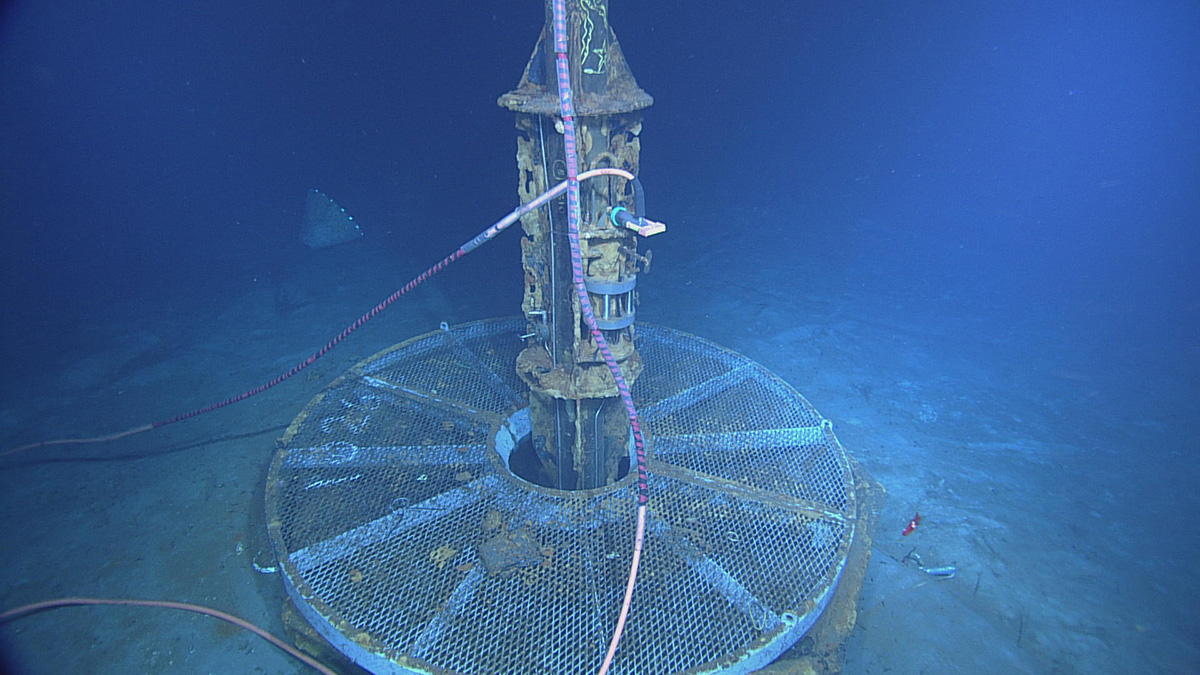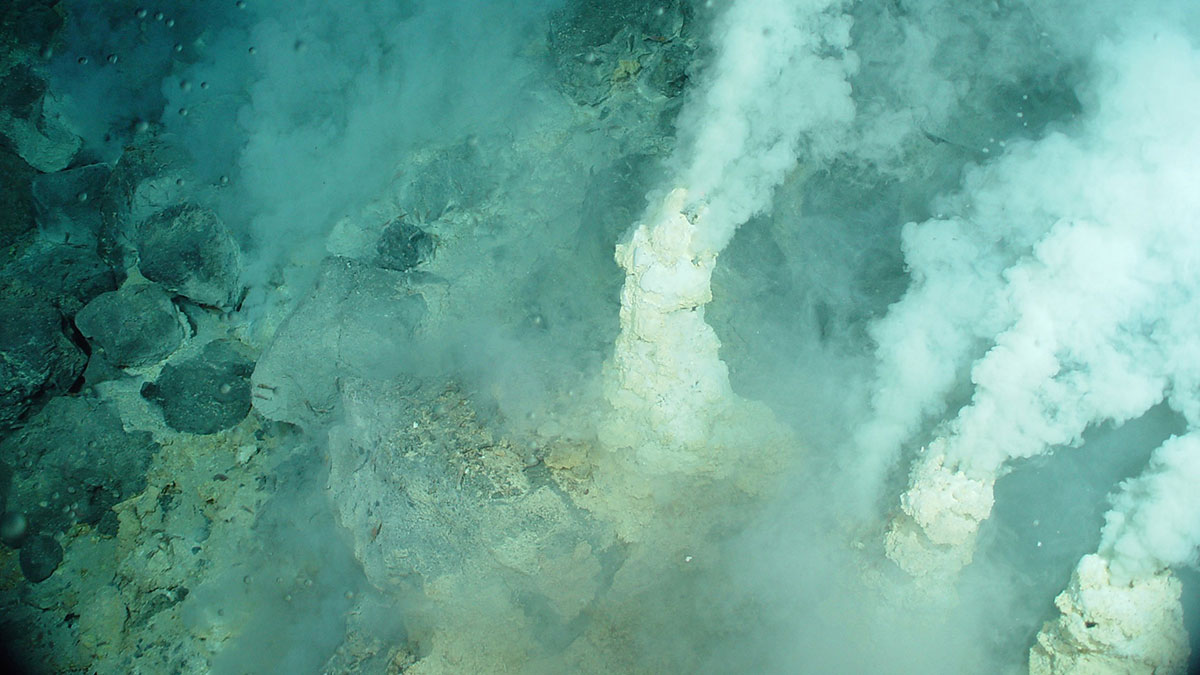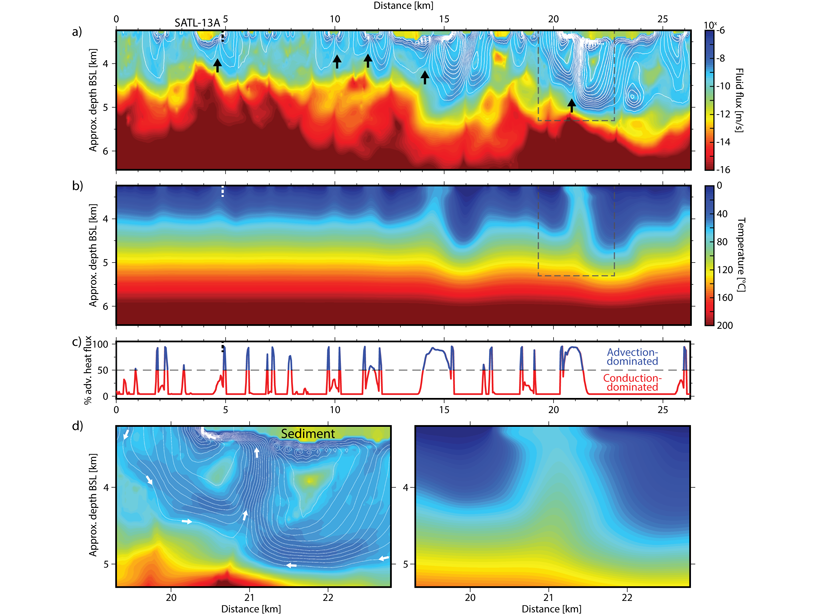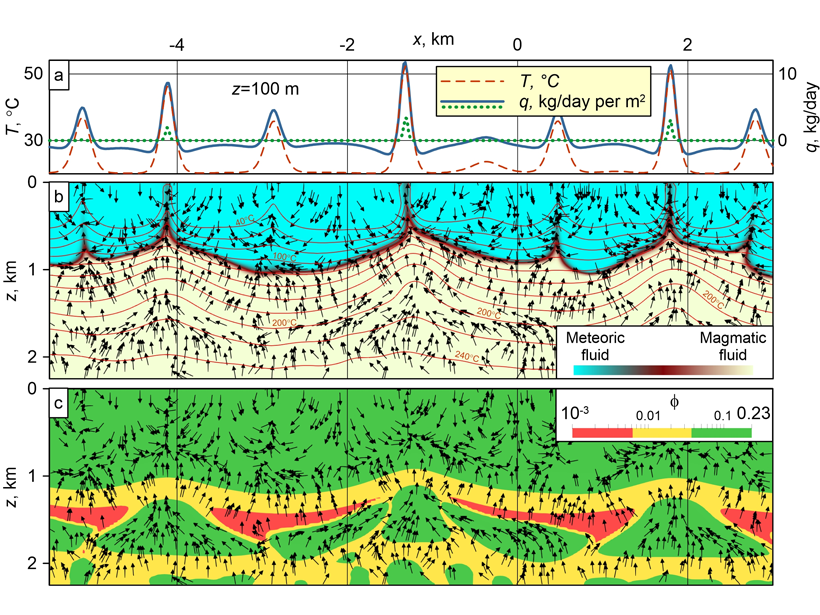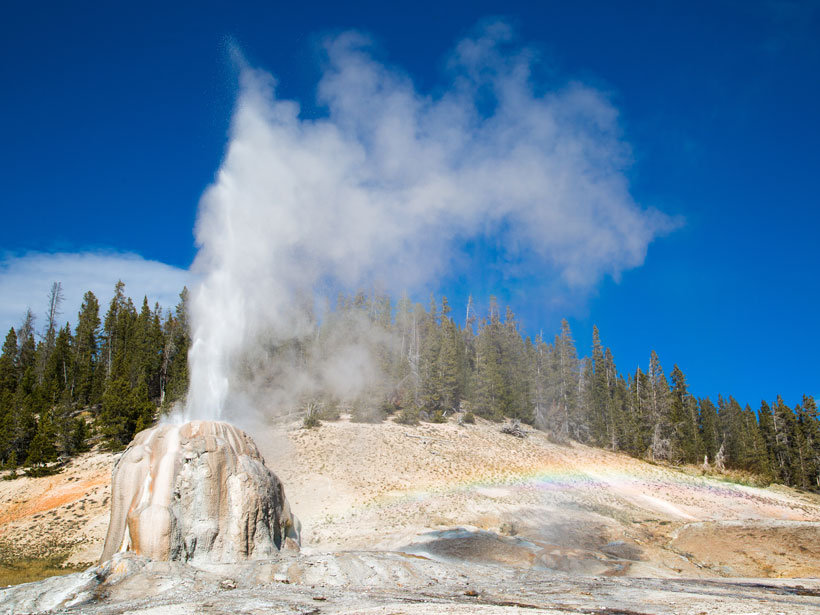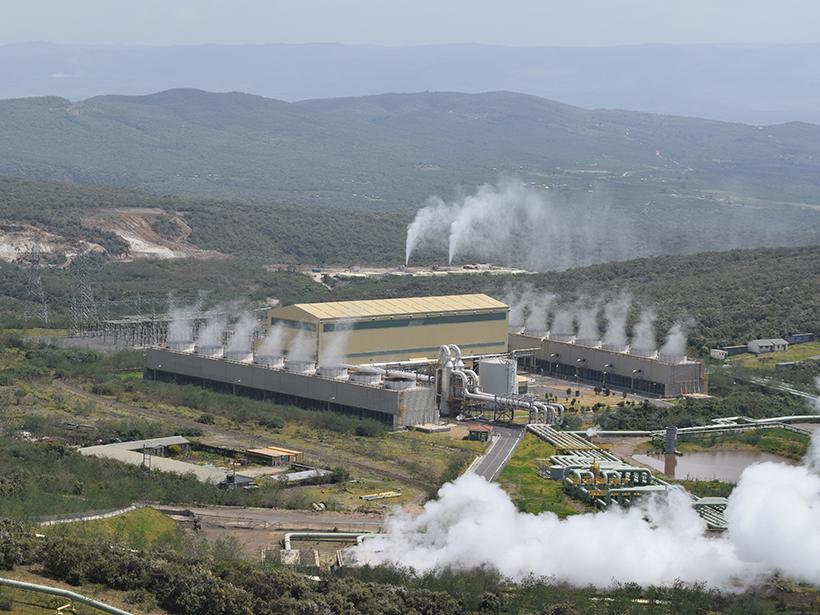Organic molecules on a Martian meteorite have fueled nearly 30 years of scientific debate. New evidence suggests they were formed by Martian processes, offering more support for a once habitable environment on the Red Planet.
hydrothermal systems
Hydrothermal Microbes Can Be Green Energy Producers
In ultramafic, reducing environments, forming microbial proteins can actually release energy.
Faults in Oceanic Crust Contribute to Slow Seismic Waves
New high-sampling rate measurements of fluid pressures in oceanic crust reveal unresolved fractures and pathways for fluid flow.
Mechanisms of Hydrothermal Ocean Plate Cooling Revealed
A combination of waveform tomography and hydrothermal modelling allows characterizing the mechanisms and reach of fluid flux and ocean plate cooling near mid-ocean ridges with unprecedented detail.
Coupled Mechanisms of Fluid Transport Across the Crust
Magmatic fluid moves up in the ductile zone through porosity waves, accumulates in high-porosity lenses, and migrates across the brittle zone in a convection pattern involving also meteoric fluid.
Why Study Geysers?
Aside from captivating our senses, geysers have much to tell us about subsurface fluids, climate change effects, and the occurrence and limits of life on Earth and elsewhere in the solar system.
Hydrothermal Vents May Add Ancient Carbon to Ocean Waters
Data from a long-distance research cruise provide new insights into carbon cycling in the eastern Pacific and Southern Oceans.
Geoscientific Monitoring of Olkaria’s Geothermal Motor
In situ geophysical measurements from Kenya’s Olkaria geothermal field, integrated with remote sensing and meteorological data, shed light on subsurface energy transport to and from the surface.
Life in the Chicxulub Crater Years After It Was Formed
While the seas were still churning from the impact and the seawater temperatures were high due to the hydrothermal activity, life was reestablishing itself inside the crater.

